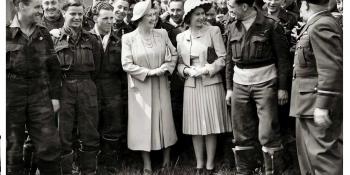WIth 830 Naval Air Squadron, The Wyvern Had Its Brief Moment Of Glory During The 1956 Suez Crisis And Its Combat Debut With The Fleet Air Arm, As Andrew Thomas Explains.
The unconventional Westland Wyvern, named after the mythological dragonlike creature that was the symbol of the medieval Kingdom of Wessex, was originally designed as a piston-engine carrier-based torpedo fighter and first flew on 12 December 1946. The original Wyvern TF.1 was powered by a 2,690hp Rolls Royce Eagle engine that drove a large contrarotating airscrew. It had a loaded weight of almost 22,000lb and embarked for initial carrier trials in HMS Implacable on 9 June 1948. Six months later the turbo-prop TF.2 had flown, this being initially powered by a 4,030hp Rolls Royce Clyde though the production aircraft used the 4,110hp Armstrong Siddeley Python that again powered a large contrarotating propeller, each with four blades. All three engines were new, untried, and resulted in a lengthy gestation.
After just 13 TF.2s were built, production switched to the TF.4, though the designation was changed to ‘S’ (for strike) in 1953 when the torpedo role was abandoned. The Wyvern was well-armed for the strike fighter role, having four 2…




